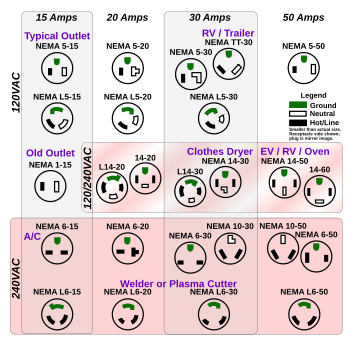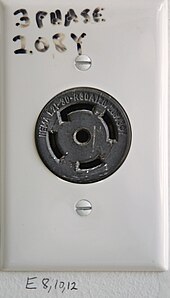AgPete139
09/2014 OTOTM Winner
⭐Supporting Member
TRS Event Participant
TRS 20th Anniversary
OTOTM Winner
Solid Axle Swap
TRS Banner 2010-2011
TRS Banner 2012-2015
- Joined
- Aug 12, 2007
- Messages
- 2,866
- Points
- 3,101
- City
- Houston, TX
- Vehicle Year
- 1997
- Engine
- 4.0 V6
- Transmission
- Manual
- Total Lift
- ~9"
- Tire Size
- 35"x12.50"x17"
Hey guys,
So I got a question for all the electrical & welding gurus.
I moved into a house, and I don't know why my welder isn't working. I also have to wire a new connection to the new dryer outlet.
Dryer outlet: 125v/250v, 30A
Wires: Green, White, Black
Welder: "220V" MIG cheap-o Harbor Freight (hey, it works fine, don't knock it)
When I touch the welder case, it has a current and is slightly shocking me (with the welder ON, and also OFF.) Also, the wire/spool is not feeding to the trigger.
HOW AM I SUPPOSED TO WIRE THIS?


I currently have the white (neutral) to the "L", black (hot) to left side, and green (isn't this normally a ground) to the right side.
How is this supposed to be 250V (125V + 125V) if I have one grounding out?





Not an electrician (and scared to catch a wall on fire),
Pete
P.S. And, as always, thanks in advance!

So I got a question for all the electrical & welding gurus.
I moved into a house, and I don't know why my welder isn't working. I also have to wire a new connection to the new dryer outlet.

Dryer outlet: 125v/250v, 30A
Wires: Green, White, Black
Welder: "220V" MIG cheap-o Harbor Freight (hey, it works fine, don't knock it)
When I touch the welder case, it has a current and is slightly shocking me (with the welder ON, and also OFF.) Also, the wire/spool is not feeding to the trigger.
HOW AM I SUPPOSED TO WIRE THIS?
I currently have the white (neutral) to the "L", black (hot) to left side, and green (isn't this normally a ground) to the right side.
How is this supposed to be 250V (125V + 125V) if I have one grounding out?



Not an electrician (and scared to catch a wall on fire),
Pete
P.S. And, as always, thanks in advance!



















